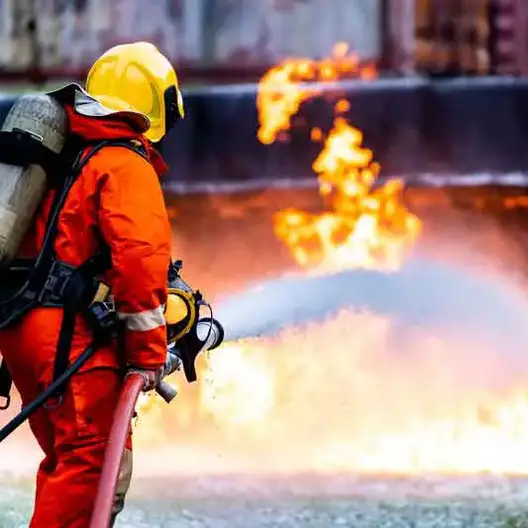A massive explosion followed by a fire erupted at the Shahid Rajaei port in southern Iran on Saturday, April 26, resulting in the deaths of at least 70 individuals and injuring more than 1,000, according to Iranian authorities. The incident occurred at Iran’s largest commercial port, located near the city of Bandar Abbas.
Efforts to control the blaze continued overnight, with helicopters and aircraft deploying water to combat the fire into Sunday morning.
Provincial Governor Mohammad Ashouri declared a three-day mourning period in response to the tragedy. Meanwhile, state television announced the resumption of port operations by Sunday, showing footage of containers being unloaded from a ship.
The cause of the explosion is still under investigation, but Iranian officials have cited negligence as a potential factor. Interior Minister Ahmad Vahidi remarked that the explosion resulted from “negligence, including noncompliance with safety precautions.” The Customs Administration of Iran attributed the explosion to a stockpile of hazardous goods and chemical materials stored in the port, though no specific details were provided.
Private security firm Ambrey indicated that the port had received a shipment of ammonium perchlorate from China in March, a chemical used in missile propellant. According to Ambrey, improper handling of solid fuel for Iranian ballistic missiles sparked the fire. Ship-tracking data analyzed by The Associated Press placed one vessel suspected of carrying the chemical near the port in March.
Gen. Reza Talaeinik, an Iranian Defense Ministry spokesman, refuted these claims on Sunday. “No sort of imported and exporting consignment for fuel or military application was (or) is in the site of the port,” he stated in a phone call with state TV, dismissing foreign reports about missile fuel as “baseless.”
Satellite imagery of the port reveals two large craters at the blast site, highlighting the explosion’s force. Verified videos analyzed by CBS News partner network BBC News appeared to show a growing fire before the explosion. The blast’s impact was felt and heard up to 31 miles away, with social media videos capturing shattered glass in buildings miles from the center.
An eyewitness captured the moments before the explosion, urgently warning others. “Get back, get back! Tell the gas truck to go! Tell him to go, it’s going to blow up! Oh God, this is blowing up! Everybody evacuate! Get back! Get back!” can be heard in a video posted on YouTube.
Iranian President Masoud Pezeshkian visited the site on Sunday, observing the destruction, including smashed or displaced containers.
Pir Hossein Kolivand, head of Iran’s Red Crescent Society, reported that of the approximately 1,000 injured, only 190 remained hospitalized by Sunday. The firefighting effort was in its concluding phases by Sunday afternoon, with the fire reportedly under control.
According to the Customs Administration, the cargo that caught fire had not been registered or formally declared before the incident.
The governor estimated that around 3,700 acres of the port site were heavily impacted. The Shahid Rajaei port is a crucial economic hub for Iran, handling roughly 70% of the nation’s goods.
Concerns have been raised about the storage of such hazardous materials at a civilian port, especially following the catastrophic Beirut port explosion in 2020, which involved ammonium nitrate and resulted in over 200 fatalities and thousands of injuries.
The explosion coincided with a meeting between Iran and the United States in Oman on Saturday, April 26, for the third round of negotiations regarding Tehran’s nuclear program. While no direct accusation of an attack has been made, Iranian Foreign Minister Abbas Araghchi noted earlier that “our security services are on high alert given past instances of attempted sabotage and assassination operations designed to provoke a legitimate response.”
The Shahid Rajaei port has previously been targeted. In 2020, a cyberattack attributed to Israel targeted the site following Israel’s report of thwarting a cyberattack on its water systems, blamed on Iran.
Situated about 650 miles southeast of Tehran, the Shahid Rajaei port lies on the Strait of Hormuz, a strategic passage where 20% of global oil trade occurs. The port’s strategic importance has led to concerns about the explosion’s potential impact on regional trade and security.
As investigations progress, authorities have identified and summoned individuals believed to be responsible for the negligence leading to the explosion. The incident has prompted both mourning and anger among locals about safety measures at the vital port facility.

